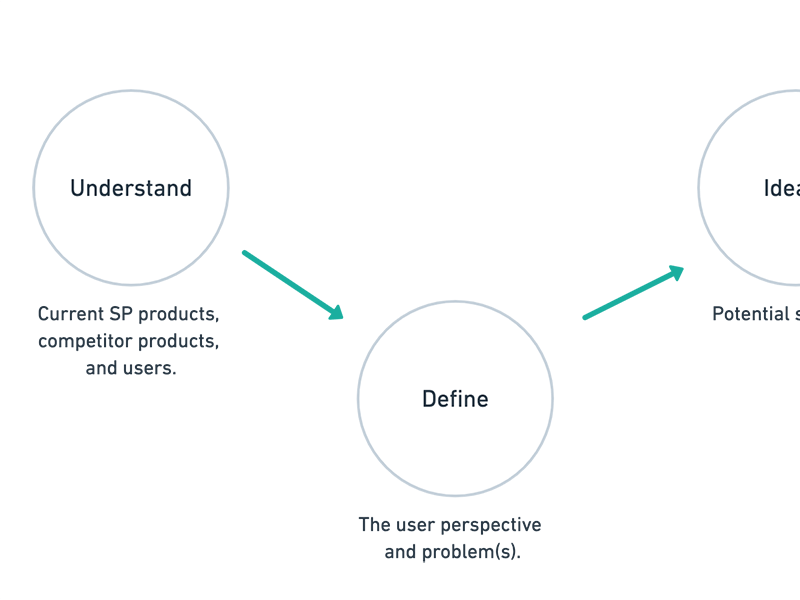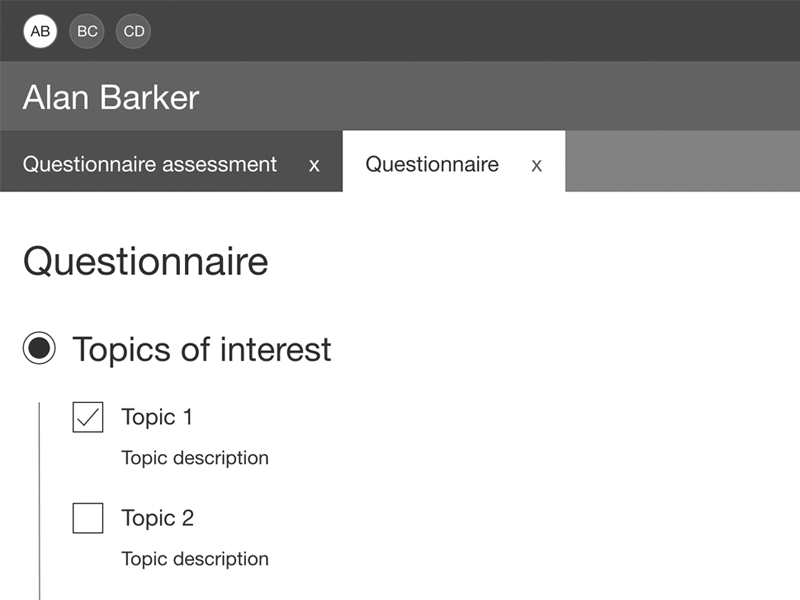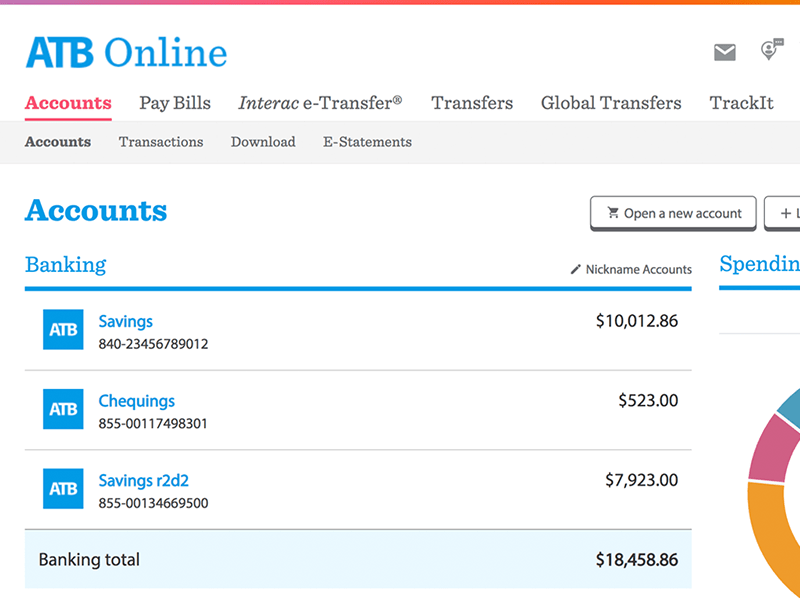Project: A look into productivity
COVID-19 has impacted my emotional and financial state. As a job-seeking individual, I relearnt that productivity did wonders for my emotional well-being (more on that here). This inspired me to explore more about productivity and its effects.

Objective
I wanted to learn what affects people’s productivity and how productivity affects people- especially during times of isolation. I also wanted to find solutions that could help people be more productive and happier.
My role
I was the sole UX designer on this project.
My tasks included:
- creating the survey (crafting questions and managing the send out)
- analyzing the results (creating affinity maps to consolidate the data)
- synthesizing the results (through themes, insights, personas and user need statements) and
- ideating (brainstorming solutions).
Empathize
Here I wanted to understand what affects people’s productivity, their response during the COVID-19 pandemic, and any other problems they had. I conducted an attitudinal research activity to both find and group attitudes and to discover issues. In this phase I surveyed people about their successes and struggles with productivity. I used Google Forms to collect survey answers from candidates.
I asked participants questions surrounding the following:
- age
- country of residence*
- employment status
- working remotely
- goals
- productivity
- obstacles
- routines
- COVID-19 and their productivity
- COVID-19 and their mood
- tools
*It’s important to know which country the responder is from as many European countries had much tighter restrictions than North American residents. This meant they potentially had less outdoor, friend, and family time.

Once I received the results, I grouped all of the information on an online affinity map.


From there, I looked for themes and created insights.

Yellow notes were applicable to COVID-19 situations only, orange notes were applicable to pre and current COVID-19 situations. This is important as solutions could be relevant to one or both situations, and if I want the solution to be relevant after COVID-19, this information needed to be recognized.

I consolidated the findings in participant quotes and personas below.
Quotes from the participants
On being more productive during COVID-19:
"I have more time to think through my ideas and time to act on an impulse of inspiration when it hits. I’m not distracted by an 8 hour working day."
On being less productive during COVID-19:
"More things and people to be concerned about, all of life’s "structure" and routines have changed, so less efficient and lots of emotional energy being used."
On how COVID-19 is affecting their mood:
"COVID-19 has definitely allowed me to be calmer and happier."
"I have become sad, irritable, lazy, depressed, experienced insomnia, just every mood you could have."
"Initially I felt very alone and stressed whereas now I have more of a routine and an acceptance of that routine which makes me feel more stable."
"At first it didn’t really affect me, but now I believe it is starting to have an impact on my general moral. It’s feels like every day is the same."
"Negatively. I miss people and being out of the apartment more."
On obstacles slowing productivity:
"Probably my sleeping, the physical inactivity (or maybe other reasons) has disturbed my sleeping pattern."
On why productivity is important:
"Productivity is important to me because it gives me a sense of achievement, which makes me happier overall."
"It’s very important because if I’m not productive I feel a great level of guilt and my anxiety increases."
"Need to feel self worth."
On how productive they are:
"Somewhat - it’s difficult to stick to a routine when you don’t have to be anywhere, so a lot of the day gets wasted just piddling around the house. I have been reading some books I didn’t have time to before, working out a lot more and cooking way more. All things I normally wish I could spend more time doing BUT I still feel like I should be doing more/being more productive with this time."
On their favourite tools and resources:
"Reading mental health, motivational and productivity hack books, podcasts and articles are also key. They’ve influenced me enormously in growing and pushing myself to fail, get up and keep going, allowing me to eventually see results and then get more motivated to be more productive."
"Motivation to do my work- I award myself with drawing or banking and exercise (to work off cake)."
"To do list ranked according to priorities and with information on how much time I plan to spend on each task. Useful because it helps to a) work on things that need immediate action, b) don’t forget the bigger picture, c) not get lost in tasks thanks to allocated maximum time per task."
(On Google Keep): "Fairly useful. It's a simple interface, but being an individual who benefits from checklists/lists, it gets the job done without any shiny bells or whistles. It's easily accessible, and serves as a reminder of what I need to accomplish.".
"Like digital. Auto backs up. Accessible everywhere. Save the trees."
(On paper as a medium): "I consider the process of writing/drawing to be helpful. It provides me a deeper involvement in the task compared to typing into the computer/app.".
Personas
To consolidate the findings and create target users, I created two personas based on the participants’ demographics and responses.

Luke
32 years old
UK resident
Single
Tech savvy but often likes to work on paper
Digital Marketer
His days
Currently working from home and has done so regularly in the past.
Works 8-5.
Has a daily routine.
Uses a paper to do list for daily tasks and Outlook Calendar for his meetings.
His passions
Exercises every morning indoors.
Motivated by deadlines.
Wants to be productive for both career and personal development.
Thrives on social gatherings and being physically fit.
His problems
Distracted by his roommate also working from home.
Distracted by Netflix.
Finding it hard to cope during COVID-19 (restrictions to stay indoors, restrictions to see friends and family in person).
Would like to learn new skills but hard to set time aside (emotionally exhausted after work).
Worries there isn’t an end in sight to the outdoor restrictions (only allowed outside one hour/day).
Though he has a routine, wishes he was more productive.
User needs and insights
I created user needs based on Luke’s problems and came up with an empathetic insight/goal for each need:
Luke, a working from home digital marketer needs to be able to focus in order to be productive for his day job.
Luke, a social and single 32 year old needs to socialize with others in order to be socially fulfilled.
Luke, an athletic man working from home needs to exercise for a minimum amount of time each day in order to feel happy and sleep well.
Luke, a curious and busy individual needs to create a routine in order to be more productive at work and have allocated free time to learn new things.

Alexis
28 years old
Canadian resident
Has a boyfriend, isolating alone
Tech savvy and utilizes apps
Software Engineer
Her days
Currently working from home due to COVID-19 but hasn’t in the past.
Works 9-5.
Doesn’t have a daily routine.
Uses a to do list app.
Her passions
Enjoys drawing in her spare time.
Enjoys the peace and quiet COVID-19 has brought.
Thrives on structure and social time with friends.
Motivated by accountability.
Her problems
Wants to explore new hobbies and exercise more but has been feeling unmotivated.
Feeling generally sad during COVID-19 but not always sure why.
Worries about unemployed friends.
Feeling lazy and deadlines have been pushed due to COVID-19.
Feels anxious when she’s unproductive.
Distracted by social media.
User needs and insights
The following user needs are based on Alexis’s problems with an empathetic insight/goal for each need:
Alexis, an isolated individual needs to talk about her thoughts and feelings and get advice while feeling supported in order to feel happier.
Alexis, a sad individual feeling lazy during COVID19 needs to find and use motivation in order to be more productive at work and to alleviate any anxiety unproductiveness causes.
Alexis, a caring friend needs support and advice in order to help with her worry over her friends’ unemployment.
Alexis, an active and creative individual needs to create and follow a routine in order to find time for exercising and hobbies.
Alexis, an active and creative individual needs to find and use motivation in order to start exercising and implementing hobbies into her routine.
Final statement
Reviewing the problems of both personas (and thus, of the research findings), some of the biggest issues included: inability to focus, lack of time management, lack of productivity, lack of hobbies, lack of happiness and lack of socialization. One pattern in these problems is the lack of a routine. This could address the problems with focus, productivity, time for personal projects/socializing, and, lack of happiness.
From this I created a final statement:
"Alexis, a working from home software engineer needs to create and maintain a routine in order to be more productive and motivated at work and in life and have allocated time for personal projects and socializing activities."
This addresses productivity in the user’s work and personal life, which from research findings, should affect their happiness positively, but there are also some mental and physical health issues stemming especially from the COVID-19 situation which would may not be resolved from having a routine. To address this, I created a secondary statement:
"Alexis, an isolated individual needs support, advice and activities in order to be happier."
Ideation
Next, I created "How Might We" statements and brainstormed solutions and features.
"How might we help Alexis to be motivated and have allocated time for personal activities with a routine?"
First round ideas
- Goals
- Rewards
- Accountability
- Measured success
- Focusing tips
- Articles and books
- Schedule
- Tips
- Tools
Second round expanded solutions and features
A physical day planner for Alexis to schedule daily tasks
- time allocated to each task
- simple layout
- a section for daily, weekly and monthly goals
- reward planner for achieved goals
- review section with a way to measure success
- tips on productivity, success, and planning
- inspirational quotes for motivation
- how much time to spend on social media
A browser and mobile app for Alexis to schedule daily tasks.
- all of the above plus,
- AI bot to track success and failure patterns with tips
- summary screen of progress- achievements, failures and streaks
- minimal and focused interface option
- accountability feature- ways for accountability partners to check completed tasks and goals
- notification reminders for task and goal deadlines (including timer functionality for time-allocated tasks)
- notifications with inspirational quotes
- articles related to task content
- recommended books and articles related to productivity, success, planning
- tips from other users
A physical or app-based robot pet
- times tasks
- nudges when goals and tasks are off-track
- receive points when your tasks and goals are achieved
- receive points when you spend reduced goal time on social media
- levels up and/or grows with points (think Tamagotchi)
- link to a friend’s pet and get double points when you’re both successful in your tasks
- summary screen of progress- achievements, failures and streaks
- achievements posted to Instagram Story and Feed
"How might we help Alexis to be mentally healthy with support, advice and activities?"
First round ideas
- Goals
- Accountability
- Articles and books
- Support
- Meditation
- Hobbies
- Tips
- Exercise
- Stretching
- Online volunteering
- Tools
- Journaling
- Online meetups
- AR and VR meetups
- Video or phone calls with family and friends
- Break from the news
- Newsletter
- Podcasts
- Webinars
- Live videos
Expanded solutions and features
A well being brand with an app, website, newsletter, Instagram account, podcast, book and journal:
- well being tips and strategies
- exercises (yoga, stretching, running, etc.) with accountability check ins
- productivity tips
- paid professional support
- tips on focusing
- meditation
- online meetups (talks, games, exercises, VR)
- good news
- adventure ideas
- humorous content
- gratitude tips
- relevant music playlists (upbeat, peaceful)
- curated books
- articles about self care
- journal on website and app
- productivity tips
- guides
- live stories
- IGTV
- well being tips and strategies
- guests with successful stories
- guests with current crisis stories
- professional therapist guests
- good news
- how to deal with bad news
- well being tips, strategies, and stories
- well being tips and strategies
- goals
- exercise guides
- productivity tips
- meditation guides
- adventure ideas
- humorous content
- gratitude tips
Next steps
Going forward I would dig deeper by interviewing users and researching the market to ensure the solutions are on the right path. Then, I would build, test, iterate and measure it.


